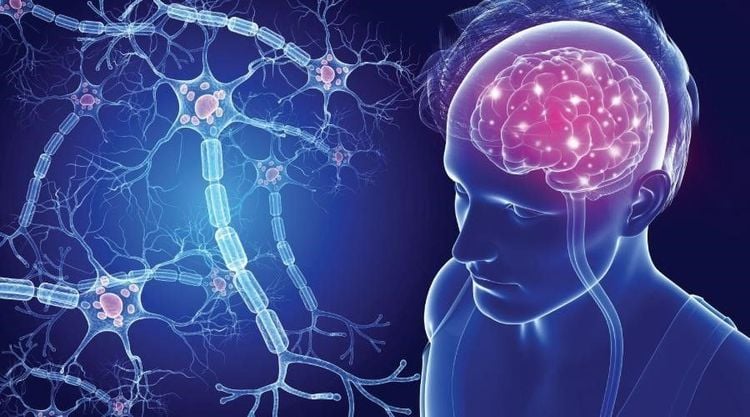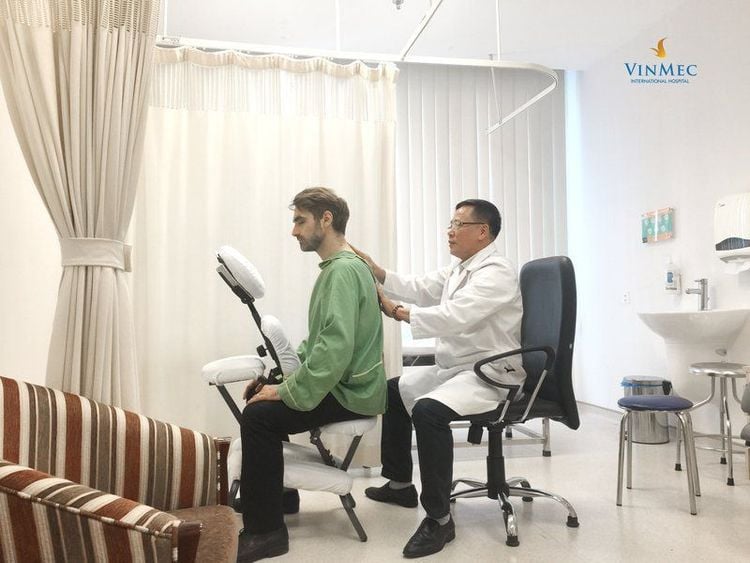This is an automatically translated article.
Multiple sclerosis is a chronic disease that damages the nerves of the spinal cord and brain, as well as the optic nerve. Scleroderma means scarring, and people with multiple sclerosis develop multiple areas of scar tissue in response to nerve damage.
1. Multiple Sclerosis
Multiple sclerosis (MS) is a disease that potentially disables the brain and spinal cord (central nervous system). In multiple sclerosis, the immune system attacks the protective covering (Myelin) that covers nerve fibers and causes communication problems between the brain and the rest of the body. Eventually, the disease can cause permanent damage or neurological impairment.
The signs and symptoms of multiple sclerosis vary widely and depend on the extent of nerve damage and the location of the nerves affected. Some people with severe multiple sclerosis may lose the ability to walk, while others may go through a long period of remission without any new symptoms.
There is no cure for multiple sclerosis. However, certain treatments can be used to help speed recovery from disease attacks and control symptoms.

Bệnh đa xơ cứng ảnh hưởng đến hệ thần kinh trung ương
2. Symptoms of Multiple Sclerosis
Many of the signs and symptoms of multiple sclerosis can vary greatly from person to person and sometimes the course of the disease depends on the location of the affected nerve fiber. Symptoms usually affect movement such as:
Numbness or weakness in one or more limbs and usually occurs on one side of the body or numbness in the legs and trunk Electric shock sensation occurs with some neck movements especially forward bending of the neck (Lhermitte's sign) Tremor, lack of coordination or unsteady gait Vision problems are also very common including:
Partial or total loss of vision, often in one eye. And there will be signs of pain when moving the eyes. Extended double vision Blurred vision
In addition, multiple sclerosis can have some symptoms such as:
Stuttering Fatigue Dizziness Sharp pain or pain in parts of the body Some problems with sexual function, bowel and bladder

Người bệnh xuất hiện triệu chứng chóng mặt
3. Causes of Multiple Sclerosis
The cause of multiple sclerosis is still unknown. It is considered an autoimmune disease, in which the body's immune system attacks its own tissues. In the case of multiple sclerosis, an underactive immune system destroys the fatty tissue that covers and protects nerve fibers in the brain and spinal cord (myelin).
Myelin can be compared to the insulation on electrical wires. When the protective myelin is damaged and the nerve fiber is exposed, information traveling along the nerve can be slowed or blocked. Nerves can also become damaged.
Several risk factors can increase your chances of getting multiple sclerosis such as:
Age: Multiple sclerosis can occur at any age, but usually affects people between the ages of 16 and 55 year old. Gender: Women are two to three times more likely to have a relapse than men. Family history: If one of your family members, such as a parent or sibling, has had multiple sclerosis, you may also be at increased risk.
Certain infections: A variety of viruses have been associated with multiple sclerosis such as Epstein-Barr, the virus that causes mononucleosis. Race: Caucasians, especially those of Nordic descent, are most at risk. People of Asian, African or Native American descent are at much lower risk. Climate: Multiple sclerosis is more common in temperate climates including Canada, the United States, New Zealand, southeastern Australia, and Europe. Vitamin D: People with low vitamin D levels and low sunlight exposure are associated with a higher risk of multiple sclerosis. Certain autoimmune diseases: The risk of multiple sclerosis is increased with certain thyroid conditions, type 1 diabetes, or inflammatory bowel disease.

Thiếu vitamin D có nguy cơ mắc đa xơ cứng
4. Treatment of multiple sclerosis
4.1. Diagnosis of Multiple Sclerosis
Tests are often used, along with medical history and neurological examination, to diagnose multiple sclerosis and rule out other causes of symptoms. More than 90% of patients with multiple sclerosis have scar tissue that shows up on MRI scans. In addition, several tests that look at the electrical activity of the nerve may be used. Or lab tests to rule out other autoimmune or infectious conditions such as HIV disease.
4.2. Treatment
Drug therapy: Although there is no cure for multiple sclerosis, there are medications that can help reduce the frequency and severity of multiple sclerosis episodes. Drug treatment can lead to less damage to the brain and spinal cord over time, slowing the disability process. When an attack occurs, high-dose corticosteroids can help cut it short. In addition, there are a number of other medications that can control symptoms of multiple sclerosis such as muscle spasms, incontinence, and pain.
Pain treatment: About half of people with MS have pain symptoms as a result of vasoconstriction in the nervous system or from muscle spasms. Your doctor may prescribe antidepressants and anticonvulsants to relieve nerve pain. In addition, muscle pain often responds well to massage and physical therapy. Physical therapy treatment: If MS affects balance, or muscle strength, physical therapy can help strengthen muscles, combat muscle stiffness, and make walking easier.

Điều trị bệnh bằng phương pháp vật lý trị liệu
5. Multiple sclerosis and exercise
Exercise can reduce symptoms, fatigue and other symptoms of multiple sclerosis. But over-exercising makes things worse. It's best to take it slow and try exercising for 10 minutes at a time. However, before you start, you should see your doctor for an examination and advice on what type of activity and level of activity is best for you. Some activities that may be possible include water aerobics, swimming, tai chi, or yoga.
6. Complications of multiple sclerosis
People with multiple sclerosis may experience some complications such as:
Muscle stiffness or spasms Paralysis, often in the legs Problems with bladder, bowel or sexual function Mental changes such as forgetfulness or mood changes Depression Epilepsy To register for examination and treatment at Vinmec International General Hospital, you can contact Vinmec Health System nationwide, or register for an online examination HERE
Source References: webmd.com, mayoclinic.org
Recommended video:
Cure multiple sclerosis with hematopoietic stem cell transplant for the first time in Vietnam
SEE ALSO:
Stem Cell Transplant - Revitalizing Critical Patients What is Multiple Sclerosis (or Multiple Sclerosis)? “Thanks to a stem cell transplant at Vinmec, I feel revived”













